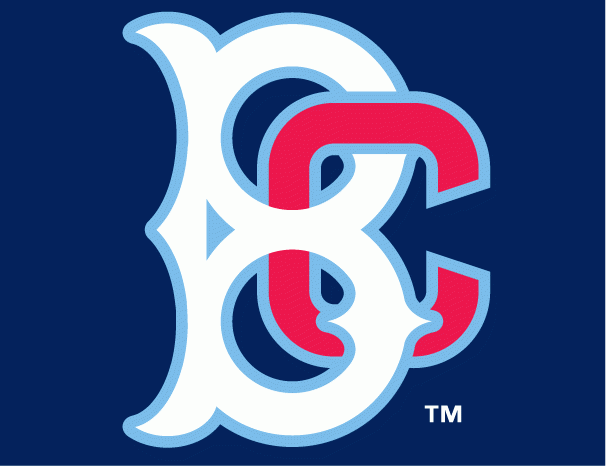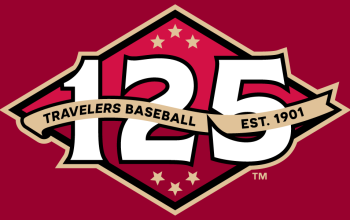More than four decades after the Dodgers broke the hearts of Brooklyn’s baseball fans by moving to Los Angeles, the sport returned to the borough in the form of a short-season class A Mets affiliate located on Coney Island—with a rickety old roller coaster called the Cyclone looming just beyond the outfield wall.
The Cyclone roller coaster, which just celebrated its 88th birthday last week, opened in 1927—thirty years before the Dodgers left Brooklyn for the west coast. The iconic roller coaster continues to run to this day, testing the limits of physical abuse its patrons are willing to endure—patrons like noted graphic designer Todd Radom, who rode the roller coaster a few years ago.
“It was an incredibly jarring ride—the kind that could rattle the fillings out of your teeth,” Radom said. “Keep in mind that the Cyclone is made of wood and metal—and that it dates back to the 1920s.”

For the uninitiated, Coney Island is basically a perpetual 4th of July celebration. If you could live on funnel cake and skee ball, you would never have to leave. Situated right on the shore, Coney Island is home to one of the nation’s most famous boardwalks, complete with all the rickety amusements and deep-fried food you would expect, not to mention the annual Nathan’s hot dog eating contest on Independence Day.
“Coney Island is such a historic part of Brooklyn,” said Billy Harner, Director of Communications for the Brooklyn Cyclones. “Before there was Vegas, before there was Atlantic City, there was Coney Island.”
Normally, a low-level minor league baseball team located in the middle of a bunch of kitschy boardwalk amusements would beg for a wacky cartoon logo.
“When we were choosing the name, people suggested Hot Dogs and things like that,” Harner said.

But this team was special. It wasn’t just that Brooklyn had loved and lost a Major League team, it’s that the team they lost had such a storied history. These were the Dodgers of Jackie Robinson, Sandy Koufax, Pee Wee Reese, and Don Drysdale. When the minor league Brooklyn Cyclones debuted in 2001, there were people for whom the wounds left by the Dodgers’ departure still felt fresh.
The Cyclones brought in designer Todd Radom, who is known to many baseball fans for his weekly appearances on Buster Olney’s Baseball Tonight podcast, during which he tries to stump the host with a uniform and logo quiz.
The need for a serious identity for Brooklyn’s new team was not lost on Radom, who started working on the project during the 2000 World Series between the Yankees and the Mets. “It was a real labor of love,” he said. “I am a New Yorker, and I am big on history. The Cyclones brought pro baseball back to Brooklyn for the first time since the Dodgers left after the 1957 season, so this was a really special project for me to be involved with.”

Obviously, the idea of a cartoon hot dog or something equally silly for a logo was kind of out the window. “This was intended to be a Minor League logo for a Major League market,” Radom said, “so it made sense to go with something refined and classy.”
Brooklyn’s baseball past isn’t just about the Dodgers; the sport’s historians attribute the first instances of such baseball mainstays as the box score and the curve ball to the borough. “The fact that Brooklyn has such a rich history with baseball is 100 percent the reason why we’ve maintained the more traditional kind of classic look,” Harner said. “We kind of look at ourselves as the guardians of something that’s much bigger than the Cyclones and goes back for over a century.”
As a native New Yorker, Radom was well familiar with the rich visual vernacular of Coney Island’s amusements. “The logo was inspired by things like old postcards and travel decals,” Radom said, “punctuated by a vivid palette and big, bold letterforms.”
The primary logo features the telltale cross-hatch pattern of the structure that holds up a roller coaster, and incorporates a baseball actually riding that coaster. With the Mets being the only parent club the Cyclones have ever known, the choice of blue as the main color was an easy one.
 The cap logo includes a B that pays homage to the old Dodgers’ B cap (right) with an interlocking C for Cyclones. Though with the demographics of Brooklyn changing, Harner says, many younger residents do not recognize the reference to the Dodgers B. The interlocking BC logo has been mistaken for Boston College or even Red Sox logos.
The cap logo includes a B that pays homage to the old Dodgers’ B cap (right) with an interlocking C for Cyclones. Though with the demographics of Brooklyn changing, Harner says, many younger residents do not recognize the reference to the Dodgers B. The interlocking BC logo has been mistaken for Boston College or even Red Sox logos.
“It’s kind of mind-boggling for a kid who grew up in a house where my grandfather and father told me stories of Jackie Robinson and Pee Wee Reese with reverence normally held for Biblical characters,” Harner said.
 While the Cyclones’ logo has remained unchanged for their 15-year existence, they introduced a new logo this season, which is featured on a cap and incorporated into the team’s 15-year logo. The mark, created by the team’s in-house designer Kevin Jimenez, features an outline of the Brooklyn Bridge, of note because it represents the entire borough rather than just Coney Island.
While the Cyclones’ logo has remained unchanged for their 15-year existence, they introduced a new logo this season, which is featured on a cap and incorporated into the team’s 15-year logo. The mark, created by the team’s in-house designer Kevin Jimenez, features an outline of the Brooklyn Bridge, of note because it represents the entire borough rather than just Coney Island.
Of course, even though the team takes the responsibility of representing baseball in Brooklyn with a classic identity seriously, it’s still minor league baseball, and minor league baseball is fun.
“We’ve kept our logo the same for forever and don’t have any plans to change it,” Harner said. “So where we’ve been able to show our creativity and uniqueness is through our promotions.”

 Among these promotions was perhaps minor league baseball’s most talked-about theme night last season, Salute to Seinfeld Night, which drew fans from around the world. The team’s ballpark was renamed Vandelay Industries Park, foul poles were called Festivus poles, and the team gave away Keith Hernandez bobbleheads (right), among other activities during the game.
Among these promotions was perhaps minor league baseball’s most talked-about theme night last season, Salute to Seinfeld Night, which drew fans from around the world. The team’s ballpark was renamed Vandelay Industries Park, foul poles were called Festivus poles, and the team gave away Keith Hernandez bobbleheads (right), among other activities during the game.
The team’s second annual Seinfeld promotion, takes place tomorrow. The Cyclones will wear technicolor Kramer jerseys, fans will receive a Little Jerry rooster “bobble-beak,” and the actor who played Kenny Bania, Steve Hytner, will participate in on-field promotions throughout the game.
The Cyclones were the first professional sports team to call Brooklyn home since the departure of the Dodgers. Since then, the NBA’s Nets and the NHL’s Islanders have moved in to the revitalized borough. In reestablishing Brooklyn as a home for professional sports, the Cyclones walked a fine line between creating a unique identity specific to their very neighborhood, Coney Island, while still paying tribute to the rich baseball heritage of Brooklyn at large.
In a lot of ways, the Cyclones are like a child wearing a tailored three-piece suit. They have a sharp look and can mingle with the grown-ups, but underneath it all, they’re just a little kid who wants to roll around in the dirt and have fun.















